Do you know where your electricity comes from or how it is made? You would be surprised to learn that perhaps your local utility is only the “flow-through” mechanism. Your electricity probably comes from a much larger power plant farther away.
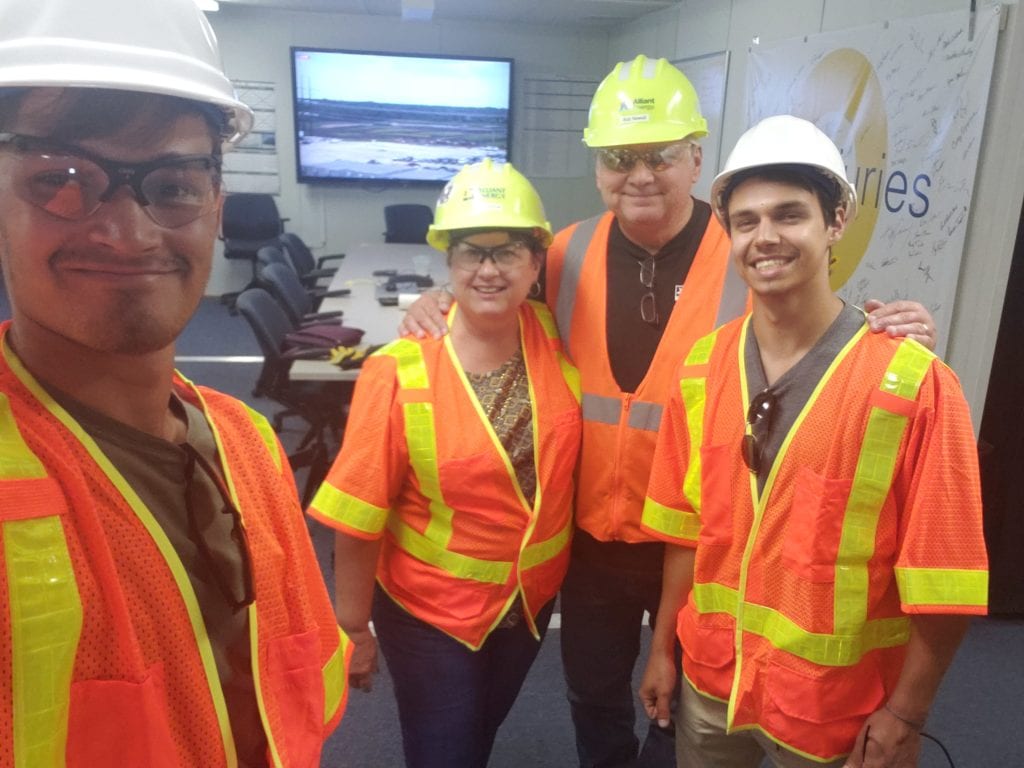
A few of us received a personal tour from the project manager of the combined cycle power plant currently being built about 40 miles away.
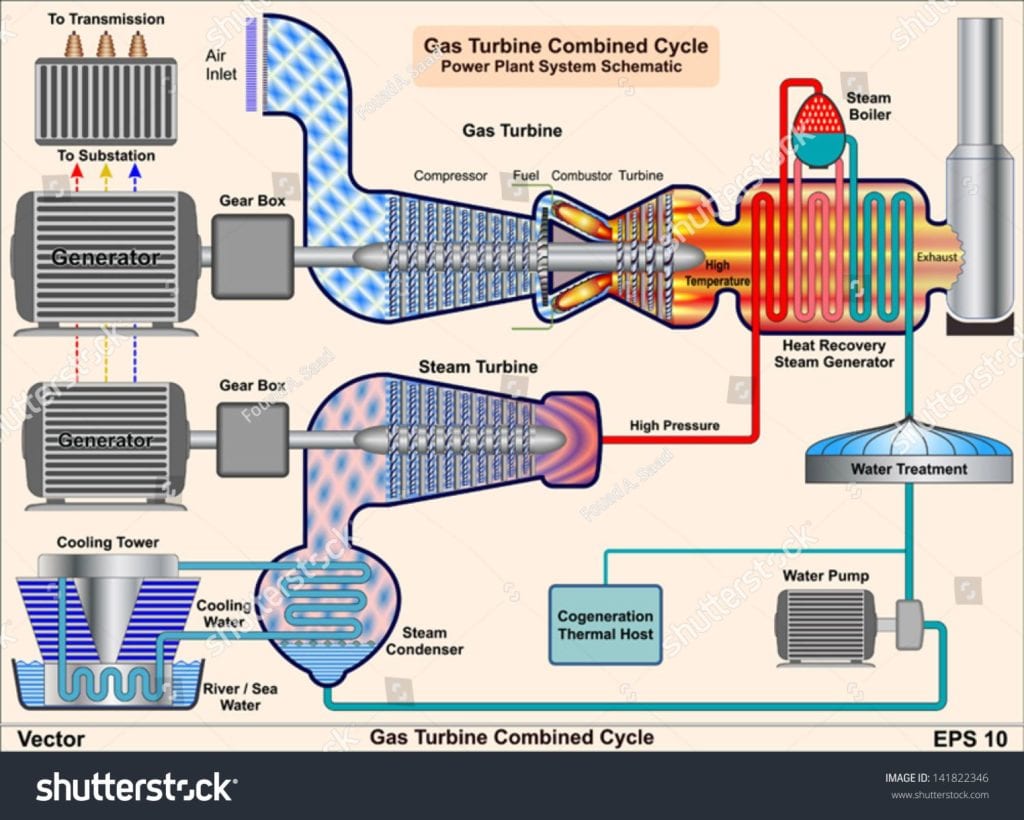
A combined-cycle power plant uses both a gas and a steam turbine together to produce up to 50 percent more electricity from the same fuel than a simple-cycle plant. The waste heat from the gas turbine is routed to the nearby steam turbine, which generates extra power.
Video of Combined Cycle Plant
The engineering to build a power plant is mind-boggling. It is more expensive to build a combined-cycle plant, but the efficiency and longer-lasting components make it more affordable long-term.
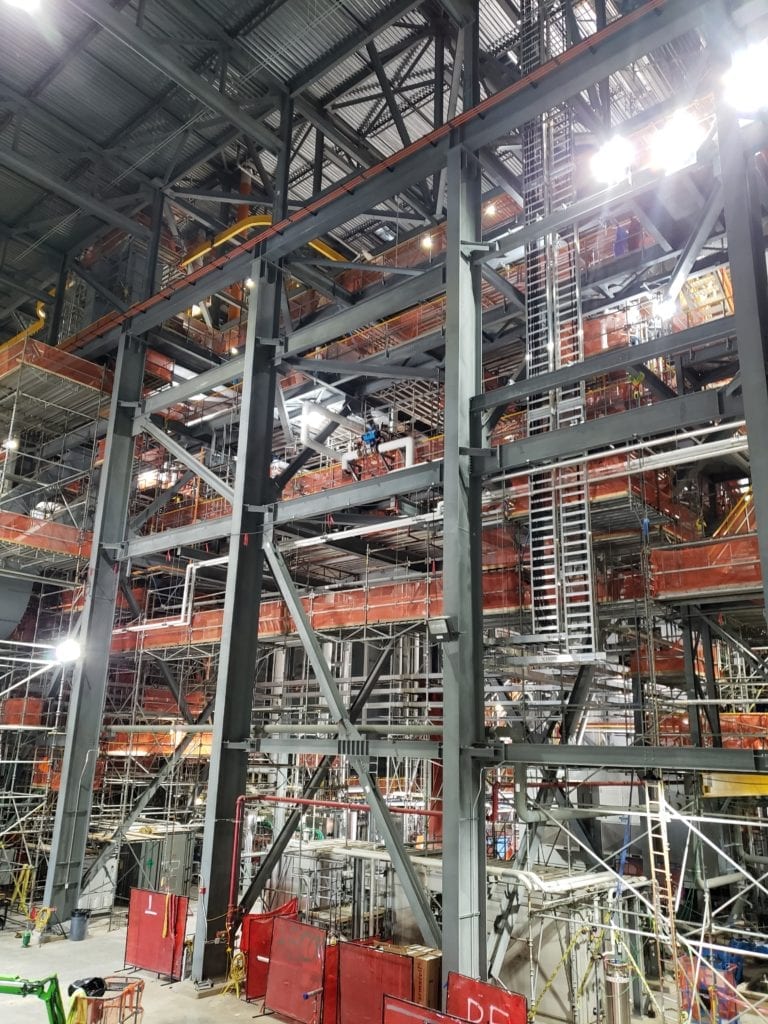
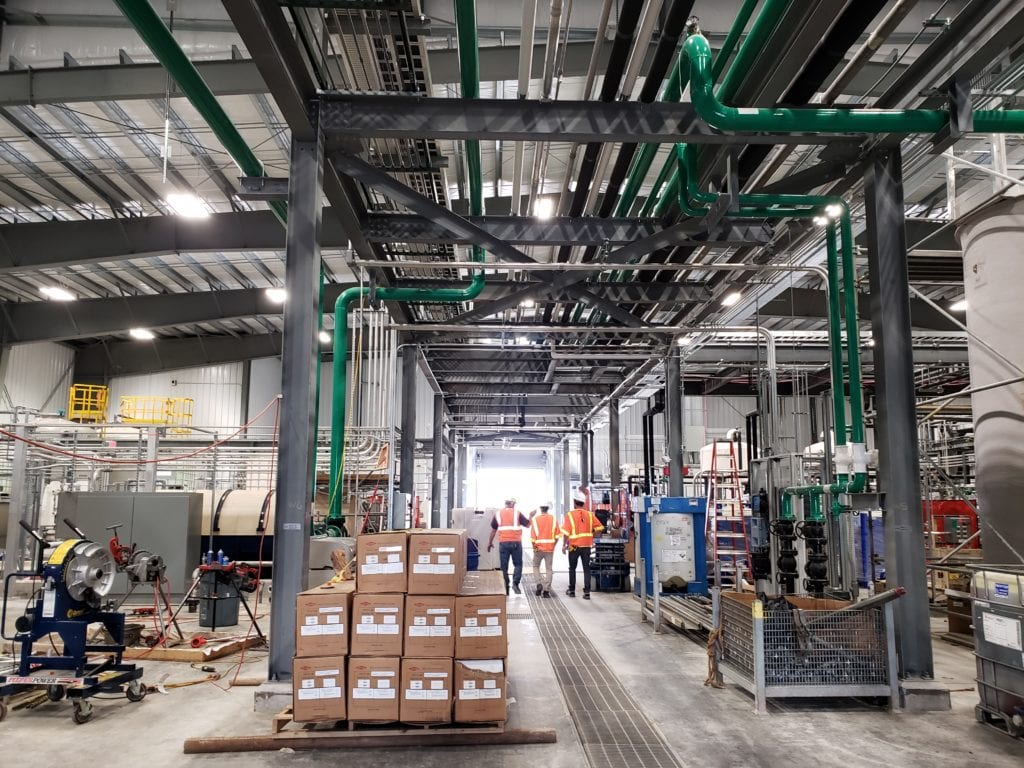
Each team or subcontractor knows their part is critical to the entire project, thus safety protocols and system checks are essential.
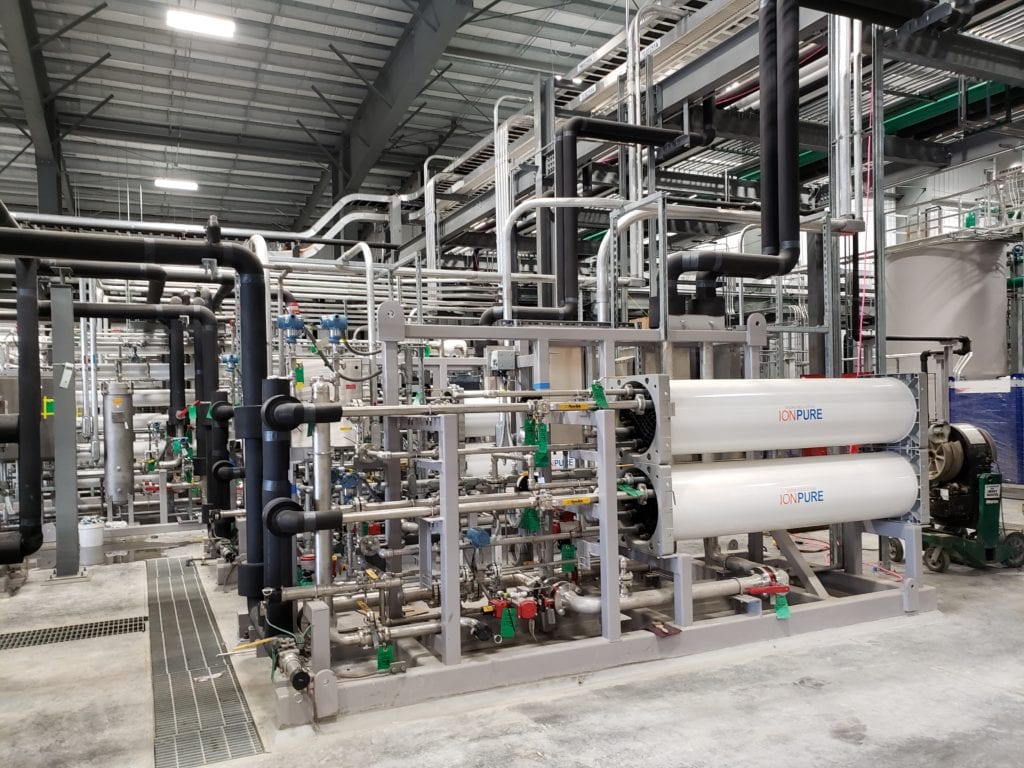
This is a reverse-osmosis water treatment system. It uses an ion-exchange process to highly purify water.
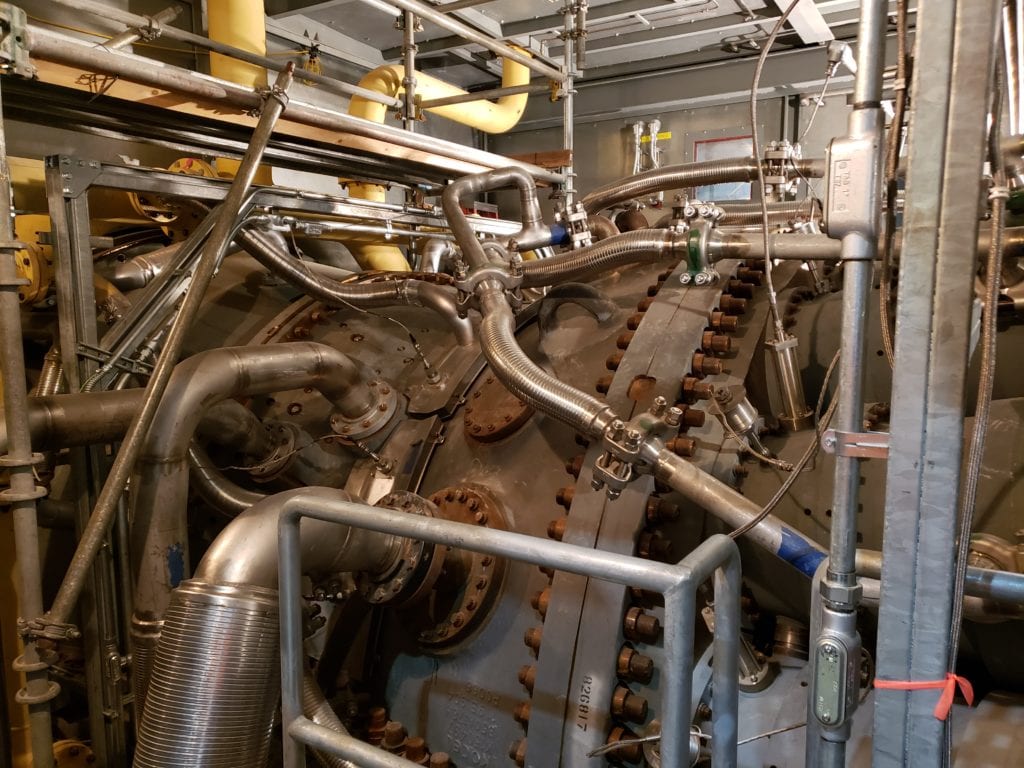 This is one of the turbines that generate electricity. This plant will generate about 700 megawatts of electricity before the end of 2019 and be fully completed by early 2020.
This is one of the turbines that generate electricity. This plant will generate about 700 megawatts of electricity before the end of 2019 and be fully completed by early 2020.
Advantages
- Can run on any fuel such as oil, methane, biogas, or natural gas.
- Very low polluants make it desirable for populated areas.
- Less staff is needed to operate this type of plant since it is highly automated.
- Maintenance “down time” is less than with a traditional fossil-fuel plant.
- Less cooling water required since it is captured, filtered, then run through again.
- The machinery can be down-sized to run on aircraft engines, locomotives, and large ships.
- It can be started-up and shut-down quickly.
Where does your electricity come from?
Since utilities are all inter-connected, you might be surprised to learn where your electricity comes from on peak summer days, or in extreme-cold winter conditions. Electricity cannot be saved, so it is transported wherever the demand is through high-powered transmission lines. It is a fine equation to produce enough electricity to meet the demand, but no more or no less.
I was grateful to learn more about the intricacies of making electricity. My impression is that it takes a lot of expertise from all the trades to meet this goal. Thank you to Alliant Energy for “keeping the lights on.”
Premiere Stagers & Realty, 608-345-9396
